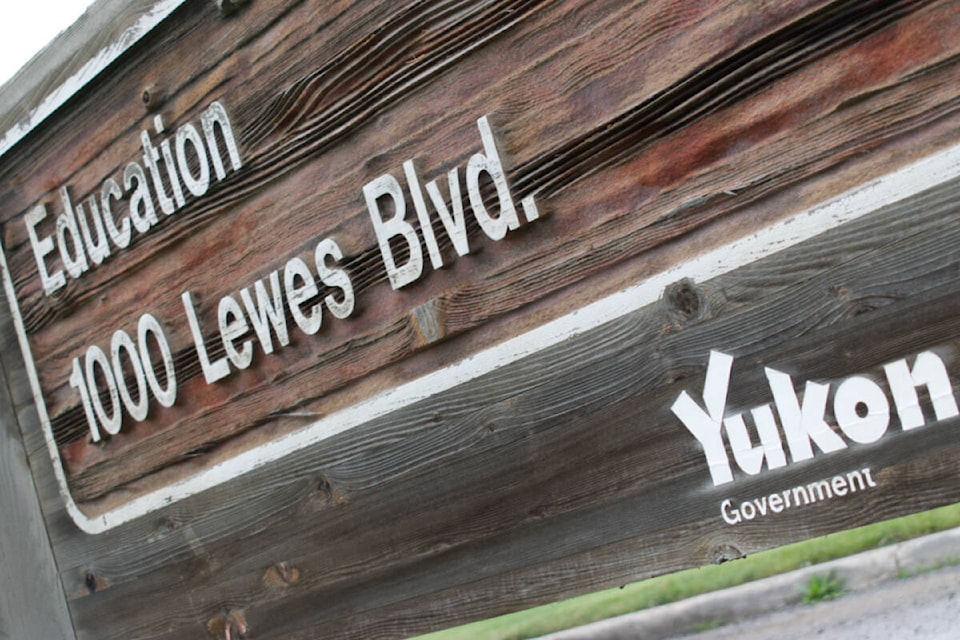The Yukon First Nation Education Directorate (YFNED) has drawn attention to the way the government has been reporting high school graduation rates which they say downplays the problem of students not finishing school.
YFNED calculates that over eight years that only 47 per cent of Indigenous students and 73 per cent of non-Indigenous students graduated, and that this is trending downwards.
Reports from the Yukon education department claim that 71 per cent of Indigenous and 83 per cent of non-Indigenous students graduated over that same 8-year period.
The difference comes down to who is considered in the calculation. The territorial government’s numbers are considering only those students who were active Grade 12 students on track to graduate if they pass their Grade 12 classes. This means that students who dropped out prior to Grade 12, or who had not passed enough classes prior to Grade 12 to make graduation possible, are not considered in the government’s numbers.
YFNED’s calculations consider an eight-year data set from the 2015/16 school year to the 2022/23 school year and considered all students, not just those entering Grade 12 with the chance to graduate. Graphs included with the YFNED calculation show that the data set captured about 1,200 Indigenous and 2,700 non-Indigenous Grade 12 students. The data for the 2023/24 school year will not be available until this fall.
“These percentages would be even lower if Yukon education department also accounted for those students who dropped out of school before Grade 12, but currently this data is also ignored — and is currently unavailable, despite YFNED requesting it,” YFNED’s press release reads.
YFNED says it has submitted 36 requests for specific information since 2021 and that none of them have been answered. A data working group has been created but YFNED says it has met only once or twice a year and that a draft agreement on further research into the data has been stalled for two years.
The YFNED calculation was conducted by a team of education and data analysts that YFNED tasked with going over the available data and reporting back on it in hopes of providing a more accurate picture of graduation rates.
“All Yukon First Nations know that serious problems prevail within the education system that prevent the majority of our students from successfully completing high school,” said Melanie Bennett, executive director of YFNED.
“Problematically, the Department of Education fails to provide the transparent data that could shine a light on this. By exposing this truth through our own independent analysis, we are holding the department accountable.”
A statement from the Yukon Education department defends the method the department employs, stating that it is modelled after the one used by British Columbia, allowing accurate comparisons between the jurisdictions.
Bennett challenged this, saying that the B.C. methodology is not suitable for the Yukon and noting that while the model may be similar, there are differences including the way that “outmigration” or the number of students who leave the jurisdiction before finishing school is calculated. Both Bennett and John Postma, a contractor who worked on YFNED’s graduation rate calculation, highlighted differences that they say make it more likely that students who drop out will be counted as outmigrants in the Yukon when compared to B.C.’s system. They say this has implications on the six-year graduation rate tracking students that achieve either a standard or adult high school diploma within six years of entering Grade 8. Both the Yukon and B.C. track a six-year rate.
“The Yukon First Nation Education Directorate has raised many concerns in their June 4, 2024, news release. They’ve also introduced a new methodology for calculating graduation rates. We became aware of these concerns through their release and will be taking time to review the methodology and concerns in detail. It is important that we complete our due diligence to be able to engage in further conversations and determine a path forward with our education partners, including the Yukon First Nation Education Directorate,” the Education department statement reads.
Neither YFNED’s nor the government’s calculations count students on the School Completion Program bound for an evergreen certificate rather than the dogwood diploma as graduates. The evergreen certificate recognizes students with special needs who complete the goals of their Individual Education Plan, or IEP, other than graduation.
Contact Jim Elliot at jim.elliot@yukon-news.com
